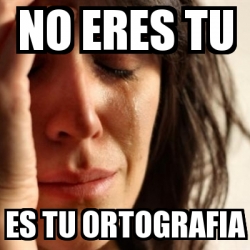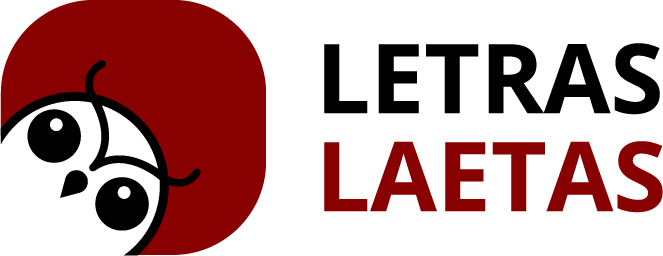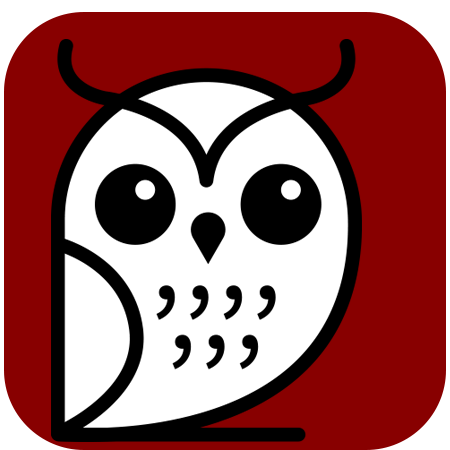Contrary to what might be thought without much historical context, spelling is not something static and immovable.. Language is a living entity, constantly changing. New realities, such as the Internet, have generated the need to use words that effectively designate what we experience day by day. And in addition to the new words or neologisms, the spelling rules of the present, for the same term, are not the same as those of the past.

Similar to when the Romans, in an ever-expanding empire, began to stop speaking Latin and little by little the Romance languages were born, changes in our language occur dropper. Sometimes we do not perceive them with as much clarity in our daily speech as when diachronic studies are carried out. These are studies that compare current orality texts or samples with those of the past.
So isn’t this one more reason to discredit the stiff work of those who demand that the texts be well written? We can talk about two main attitudes towards grammatical norms and the use of language: the descriptive approach and the prescriptive approach.
Descriptive linguistics and prescriptive linguistics
The descriptive approach recognizes language as something in constant change and does not assume that there are right and wrong things to do when speaking. It does not judge as good or bad if a speaker writes or says things like “hicistes, dijistes, haiga”, or innovates with words like “lobuki, mirrey”. Even if you use abbreviations like:
- ntp – No te preocupes
- dtb – Dios te bendiga
- wtf – What the fuck
- btw – By the way
- lol – Laughing out loud
The descriptive approach consists of observing the phenomena of the language and describing them. Its premise is that the ultimate goal of language is to communicate.. Therefore, if a speaker manages to convey his message successfully, he is a competent speaker and the way he does it (“haiga sido como haiga sido”), correct or incorrect in the eyes of the most demanding, is irrelevant.
First grammars of Spanish
The first grammar of peninsular Spanish was written in 1492 by Antonio de Nebrija. His intention in writing this grammar was to “combat and uproot barbarism” that moving away from classical models leads to. In it, he exhorts that through Castilian learning, the latin is learned. In other words, he wrote this book so that people who spoke Spanish would stop doing so and learn Latin. As you probably already realized, this is a prescriptive grammar.
The first grammar of Spanish in America was written by the Chilean Andrés Bello in 1847. In his Grammar of the Spanish language, Bello points out that his work is “faithful to the cause of American independence” and to the need for organization. The intention of the work is to maintain the unity of the language as a “fraternity link” on both shores of the Atlantic and open horizons for new research. He recommends the preservation of Spanish and admits “what is peculiar to Americans, supported by the use of educated people.” This grammar is obviously descriptive.
The tongue and the power to say the right thing
Historically, political power is linked to the prestige of languages and their dialect variants, and therefore, to what is considered correct or incorrect. The Spanish that we speak in Latin America is different from the one spoken in the Iberian Peninsula, but that doesn’t make it better or worse.
The Real Academia Española (RAE), Founded in Madrid in 1713, it is the institution that regulates the use of Spanish through the promulgation of norms that maintain its unity in the more than twenty countries where it is spoken. However, each of these countries has a different dialect variant. We can talk about the Spanish dialect of Spain, the Spanish dialect of Mexico, the Spanish dialect of Argentina, etc. Therefore, the rules of each country are different. To regulate them (that is, to do prescriptive linguistics) the first thing to do is to describe them. So the descriptive and prescriptive approaches go hand in hand..
Spelling in chats and on social media

The Internet turned the publishing industry around. Before, being published was a much more complex issue than now, when with a blog or social media we create a communication channel in which without the need for intermediaries, such as publishers, anyone can express their thoughts through texts and images (memes, emojis, videos, among others). For the same reason, the texts are not usually as careful as when they passed through the hands of a style proofreader among other quality filters.
Many times, the incorrect use of language on the Internet is done deliberately, particularly memes seem to be exempt from the editorial precision that other texts have, perhaps because of their playful and irreverent intention. Think of phrases like “Baia baia” (vaya, vaya) or the famous “ola k ase” (hola, qué hace). Despite the fact that studies have been carried out on the uses of language on the Internet, only time will tell what becomes the norm.
When is it indispensable to write correctly?
No matter how lax and descriptive we want to be, there are two cases in which it is essential to regulate the use of our spelling and grammar:
-
- In cases of ambiguity. When a text is ambiguous, only the spelling can give us clues to determine the meaning that the author wanted to communicate. Let’s take, for example, the sentence “I only need Internet to live”, does the speaker only need Internet to have a life, or does he plan to move alone and therefore must contract this service? In the first case, it would be convenient to use a diacritical tilde in the adverb only to clarify the meaning of the sentence.
- In cases of academic seriousness or professional rigor. Just as there are Internet forums whose sole purpose is to provide entertainment, there are other spaces where vital issues are discussed, namely: scientific, medical, financial and corporate texts in which the information provided affects the quality of life of the readers.
Both to provide confidence to the reader, who may be a potential client, and to assume the responsibility that is placed on us as professionals in our fields, spelling is indispensable. And despite the fact that each era has its own orthographic code, something that will not cease to be valid was written and immortalized since 1726 in the Proemial Discourse on the spelling of the Castilian language:
One of the main qualities, which not only adorn, but also make up any language, is spelling, because without it one cannot fully understand what is written, nor can one clearly perceive what is meant to be understood.
In order to regulate the use of the language in the face of this phenomenon of self-publishing on the Internet, the Fundación del Español Urgente has collected various recommendations in the book Writing on the Internet, a guide for new media and social networks.. The RAE also has a publication entitled Book of style of the Spanish language, oriented to writing in the digital field.
In summary…
Do you want to keep sending abbreviations in other languages? Inventing words in your chats and memes? You’re a very creative speaker. Perhaps the way you communicate affects what in the future will be considered normal.
However, when writing for your corporate blog or for social media, be correct. Remember that what you do has an impact on the quality of life of people.
At Letras Laetas we can help you communicate effectively on digital channels. We offer you the assurance that your texts are correct, so that your potential customers trust your business. Contact us for more information.


